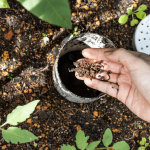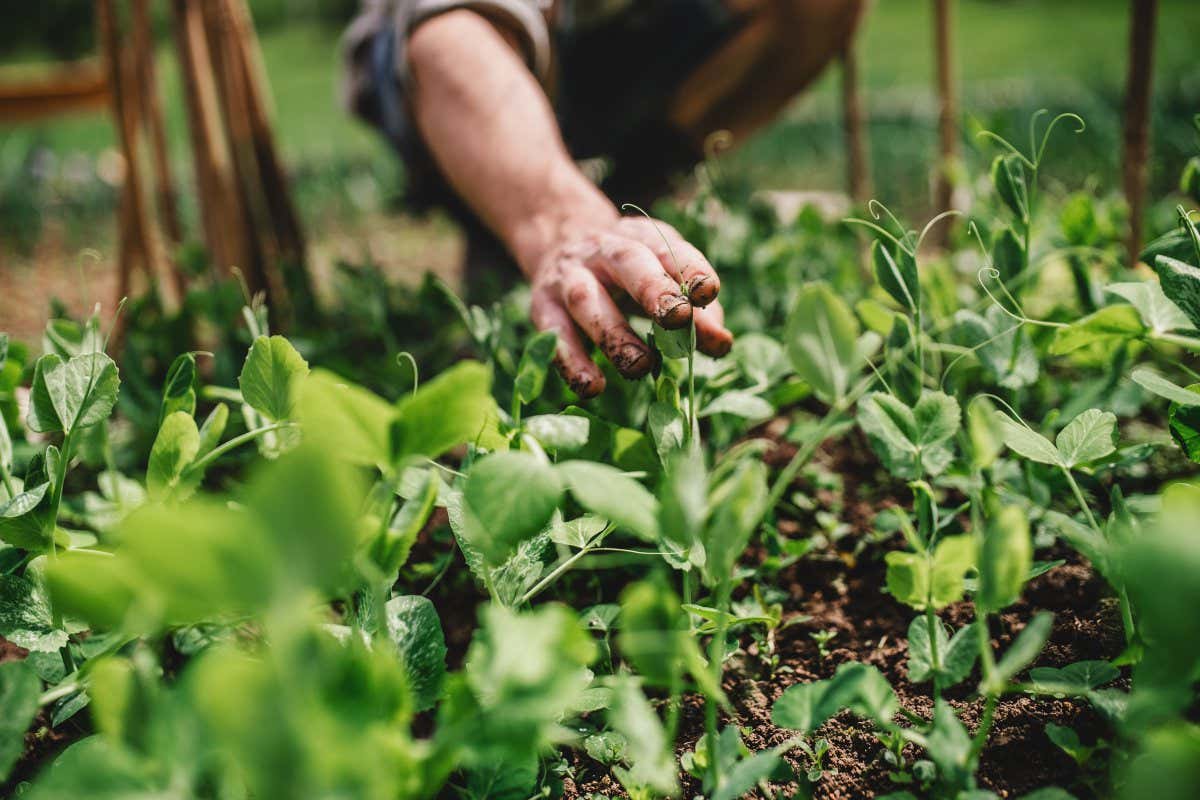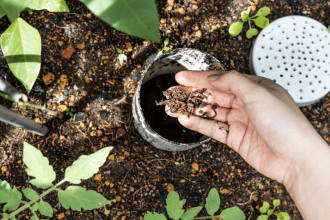In the intricate dance of nature, crop rotation plays the role of a silent conductor, orchestrating a symphony of benefits for the humble gardener. As the seasons shift and the earth breathes new life into our precious plants, the practice of rotating crops ensures a harmonious balance in the garden. From replenishing nutrients to reducing pests and disease, the advantages of this age-old technique are as bountiful as the fruits of our labor. Join us as we delve into the wondrous world of crop rotation and uncover the myriad benefits that await those who embrace its wisdom.

Why Crop Rotation is Essential for Healthy Gardens
Embracing the practice of crop rotation in your garden can have a multitude of benefits that directly contribute to the overall health and productivity of your plants. By strategically rotating the types of crops grown in specific areas of your garden, you can help prevent the buildup of pests and diseases in the soil. This, in turn, reduces the need for chemical pesticides and fertilizers, creating a more sustainable and eco-friendly gardening environment.
Another key advantage of crop rotation is the improvement of soil health. Different plants have varying nutritional requirements, and rotating crops helps to balance the soil’s nutrient levels. For example, legumes like peas and beans are known for fixing nitrogen in the soil, which benefits subsequent crops that require this essential nutrient. This helps to maintain soil fertility and promotes healthy plant growth.
Additionally, crop rotation can help to break the life cycles of pests and diseases that target specific plant families. By switching up the types of crops grown in a particular area each season, you can disrupt the breeding and feeding patterns of harmful insects and pathogens. This natural method of pest control can reduce the need for chemical interventions, leading to a more harmonious and balanced garden ecosystem.
Overall, the practice of crop rotation is a time-tested strategy that has been proven to promote healthier, more productive gardens. By diversifying the types of crops grown in your garden and rotating them strategically, you can enhance soil fertility, reduce pest and disease pressure, and ultimately enjoy a bountiful harvest year after year.
Improving Soil Health and Fertility Through Crop Rotation
One key strategy for improving soil health and fertility in your garden is through the practice of crop rotation. By rotating different types of crops in your garden beds each season, you can help replenish nutrients in the soil, reduce pest and disease pressures, and improve overall plant health.
Crop rotation works by planting crops from different plant families in a specific sequence to prevent depletion of soil nutrients and reduce buildup of pests and diseases. For example, planting legumes like beans or peas in one season can help fix nitrogen in the soil, which is then available for the next crop to use. Rotating to a different family of crops the following season can help break pest and disease cycles, as many pests are specific to certain plant families.
Some of the key benefits of crop rotation in gardening include:
- Improved Soil Fertility: By planting a variety of crops, you can help maintain a balanced nutrient profile in the soil.
- Reduced Pest and Disease Pressure: Rotating crops can help break cycles of pests and diseases that may have built up in the soil.
- Increased Biodiversity: Planting a variety of crops can attract a wider range of beneficial insects and microbes to your garden.
| Crop Rotation Example | Plant Family |
|---|---|
| Year 1: Tomatoes | Nightshade |
| Year 2: Lettuce | Asteraceae |
| Year 3: Beans | Legumes |
Preventing Pests and Diseases with Strategic Crop Rotation
Strategic crop rotation is a key practice in gardening that can help prevent pests and diseases from taking over your crops. By rotating the types of plants you grow in a particular area each season, you can disrupt the life cycles of harmful pests and pathogens, effectively reducing their numbers and limiting the spread of disease.
There are several benefits to implementing crop rotation in your garden:
- Pest Control: By planting different types of crops in the same area each season, you can reduce the buildup of pests that target specific plants. This can help decrease the need for chemical pesticides in your garden.
- Disease Prevention: Certain plants are susceptible to particular diseases, which can linger in the soil and infect future crops. By rotating crops, you can break this cycle and reduce the risk of disease spreading.
- Soil Health: Different plants have varying nutrient requirements, and planting the same crops in the same spot year after year can deplete the soil of essential nutrients. Crop rotation helps maintain soil fertility and structure by diversifying the types of plants grown in a particular area.
| Crop Rotation Plan | Example Crops |
|---|---|
| 1st Year | Tomatoes, Peppers |
| 2nd Year | Cucumbers, Squash |
| 3rd Year | Beans, Corn |
Maximizing Yields and Diversity in Your Garden Through Crop Rotation
Crop rotation is a tried and true method that can bring a multitude of benefits to your garden. By rotating the types of crops you plant in each area of your garden, you can help maximize yields and diversity while also improving soil health and reducing the risk of pests and diseases. This age-old technique has been used by gardeners for centuries, and for good reason.
One of the key benefits of crop rotation is that it helps to prevent the buildup of pests and diseases that can affect specific plant families. By rotating your crops, you can effectively disrupt the life cycle of these pests and diseases, reducing the need for chemical interventions. This not only promotes healthier plants but also contributes to a more sustainable and eco-friendly approach to gardening.
Additionally, crop rotation can help improve soil structure and fertility. Different plants have varying nutrient requirements, so by rotating crops, you can help ensure that your soil remains balanced and enriched. This can lead to higher yields and healthier plants in the long run. With careful planning and consideration, you can create a robust crop rotation plan that maximizes the benefits for your garden.
In conclusion, crop rotation is a simple yet effective technique that can greatly benefit your garden. By rotating the types of crops you plant each season, you can improve soil health, reduce pest and disease pressures, and increase overall yields. So why not give it a try in your own garden and see the difference it can make? Happy gardening!






















